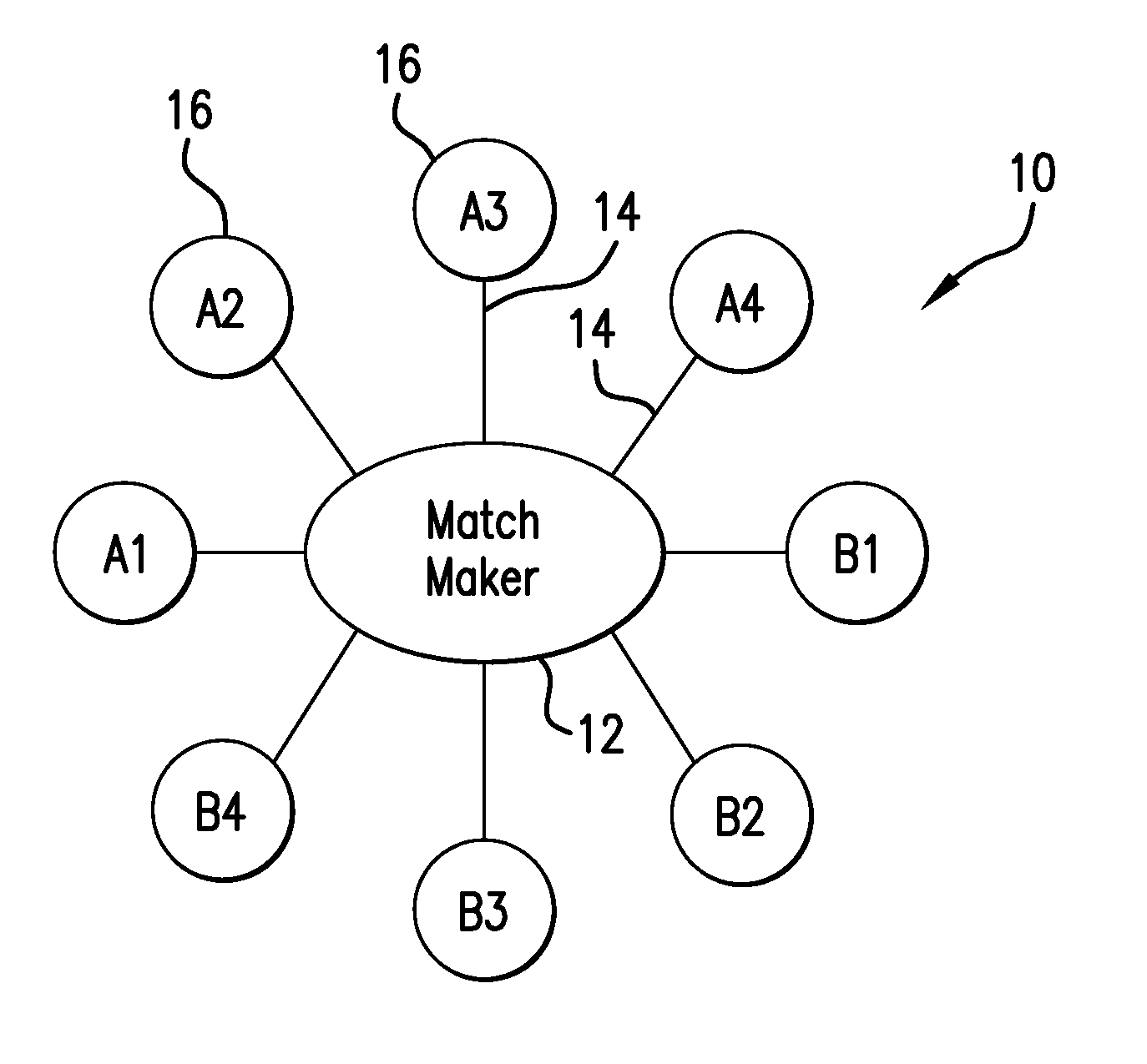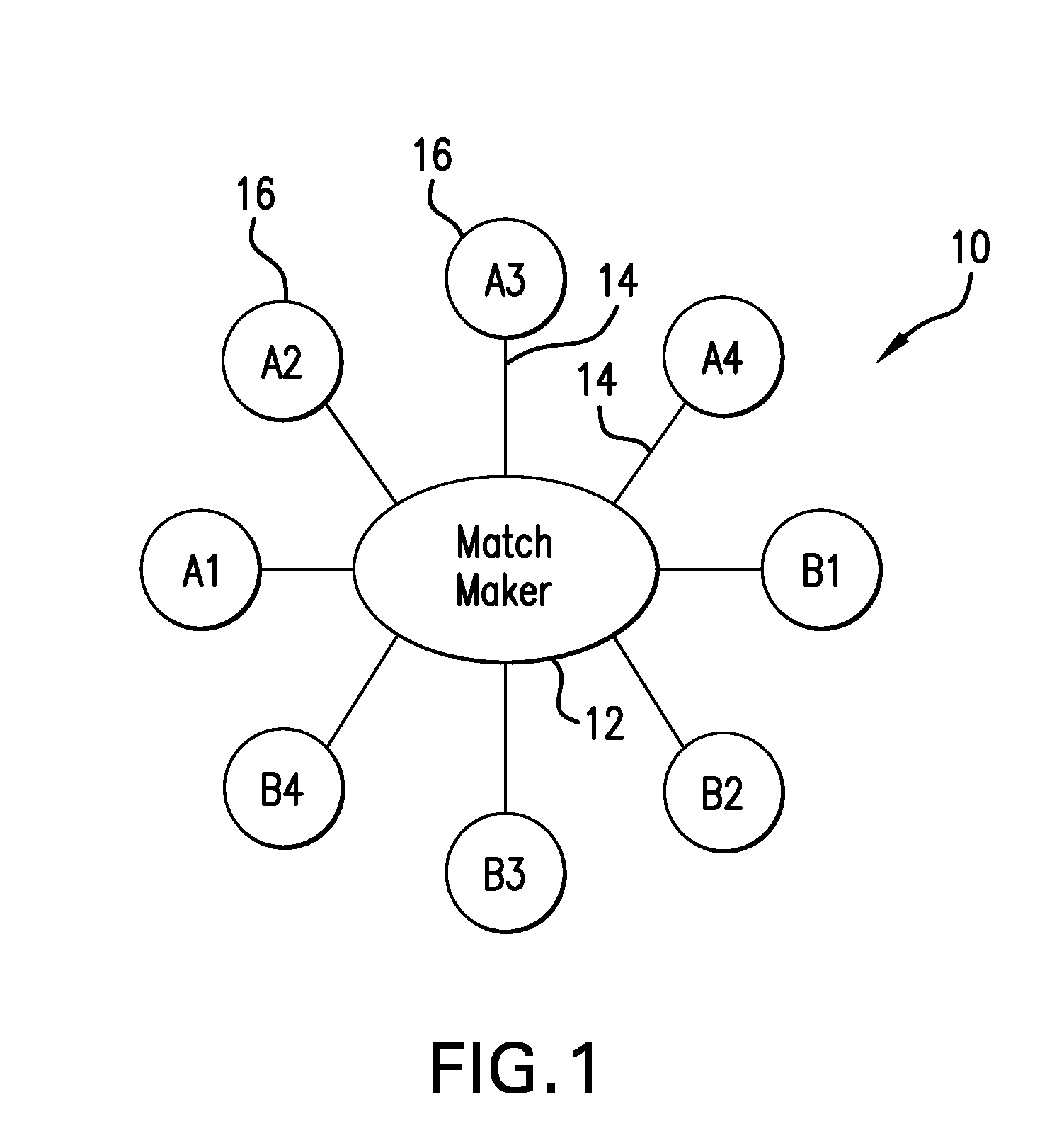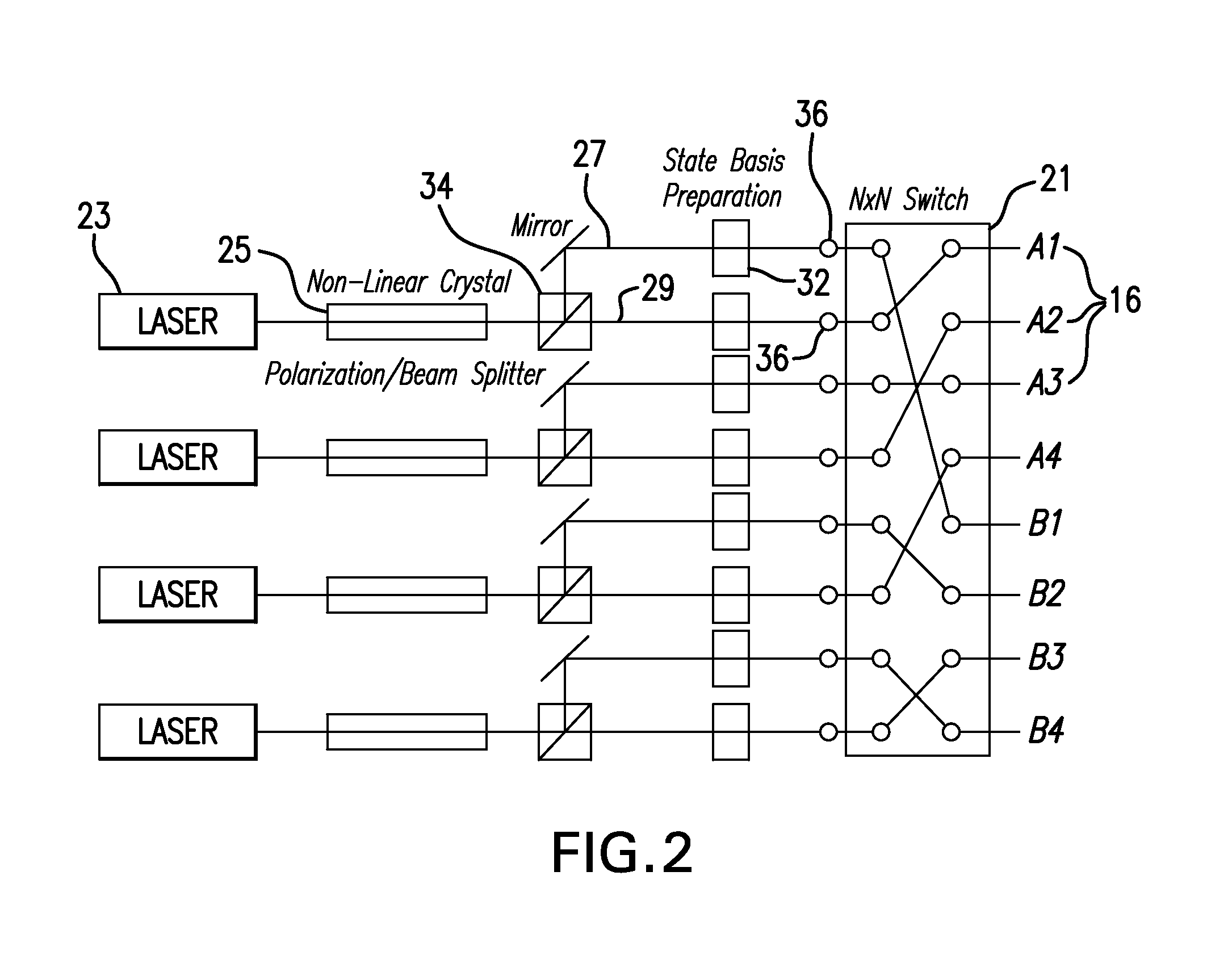Incorruptible public key using quantum cryptography for secure wired and wireless communications
a technology of quantum cryptography and public key, applied in the field of communication, can solve the problems of difficult decryption of messages without encryption keys, and difficult decryption of messages by eavesdroppers without encryption keys, etc., and achieves the difficult determination of an eavesdropper's computer
- Summary
- Abstract
- Description
- Claims
- Application Information
AI Technical Summary
Benefits of technology
Problems solved by technology
Method used
Image
Examples
Embodiment Construction
[0057]Entangled photons are twin photons that are created at exactly the same moment in time. Their features (e.g., their color, momentum, and / or polarization) cannot be determined without measuring them, but their relationship to one another in a certain basis (or measurement reference frame) is always known, as is the relationship between their properties. By measuring the properties of one photon one can determine the corresponding properties of the other photon, even if the two photons are separated by a physical distance.
[0058]By way of example, one blue laser photon might create a twin pair of entangled photons—one of the pair being red and the other being green—in a certain measurement basis. Which photon is red and which is green cannot be known without measuring them both in the measurement basis in which they were originally prepared. However, the knowledge that one is red and one is green is guaranteed by the laws of quantum mechanics. Such photons are referred to as “ent...
PUM
 Login to View More
Login to View More Abstract
Description
Claims
Application Information
 Login to View More
Login to View More - R&D
- Intellectual Property
- Life Sciences
- Materials
- Tech Scout
- Unparalleled Data Quality
- Higher Quality Content
- 60% Fewer Hallucinations
Browse by: Latest US Patents, China's latest patents, Technical Efficacy Thesaurus, Application Domain, Technology Topic, Popular Technical Reports.
© 2025 PatSnap. All rights reserved.Legal|Privacy policy|Modern Slavery Act Transparency Statement|Sitemap|About US| Contact US: help@patsnap.com



